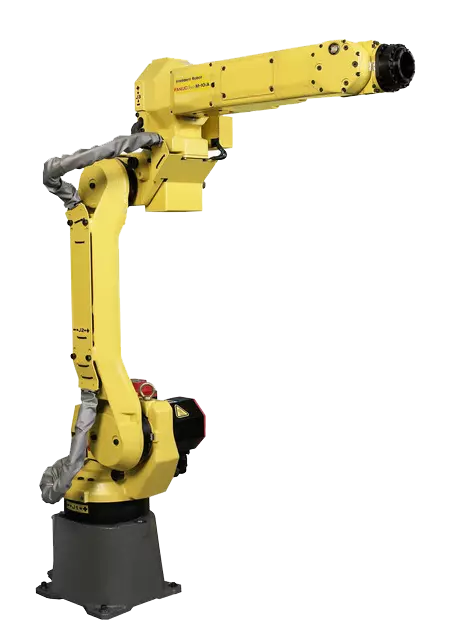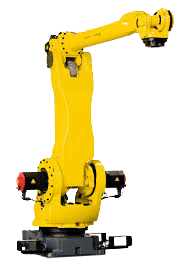Robots in the Food Industry
The food industry is one of the largest and fastest growing markets for the adoption of automation with robotics, especially in the U.S. Population growth has led to increased demands in food production. Consumers want better quality food at competitive prices. Industrial robots are helping those in the food industry achieve both by increasing productivity, reducing cycle times, preserving food safety, and reducing production costs.
Food Packaging
Packaging was the first process to be automated with robotics in the food industry. Robots are used to complete pick and place, packing, and palletizing applications within this area of food manufacturing that involves three different stages:- Primary - Primary packaging is the first stage and involves the packaging of individual foods. For example, a FANUC M-20ib/25 will pick and place individual croissants into a plastic container.
- Secondary - The second stage of food packaging involves the grouping of the primary packages together. For instance, the containers of croissants that were packaged above will then be transfer by a robot like the Motoman MH50 and packed into a box.
- Tertiary - In the last step of food packaging the secondary packages are prepared for shipping. Continuing with the example from above, a palletizing robot, such as the ABB IRB 6640-205/2.75, will place the secondary boxes onto a pallet in order to be shipped out.
Food Processing
Advances in robotic technology has allowed robots to move into the food processing stages. They are capable of completing sorting, cutting, dispensing, and inspection applications within this area of food production. The innovation of soft gripper technology allows robots to gently handle sensitive foods like fruits by mimicking the dexterity of a human hand. Meat processing facilities were the first to automate with robotics with the certification of the FANUC M-430iA by the USDA. Food processing is broken down into two stages:- Primary Processing - Primary processing involves the handling of raw foods such as meats, produce, or dairy. Primary food processing typically occurs in facilities with less than ideal conditions for workers such as frigid or warm temperatures, making this area perfect for robotic automation. Robots are designed to handle these difficult elements to perform tasks such as meat cutting and produce sorting.
- Secondary Processing - With secondary food processing it is more common to see automation with robots as opposed to primary processing. This often involves the handling of cooked, baked, or chilled food items. Robots are used to complete sorting, inspecting, or mixing tasks.
Preserving Food Safety
You may be wondering if having robots handle food is really sanitary, especially since robots typically work in industrial fields. Robots working in the food industry are designed to meet the stringent safety regulations of food manufacturing. Food grade robots, such as the cleanroom FANUC LR Mate 200id/7L, are specially sealed to prevent moisture and bacteria escaping from the robot. Their hoses, cables, and wires are housed inside the robot body to prevent contact with the food items. Food grade lubricant is also used to further prevent any contamination. In fact, the use of robotics with food handling eliminates the need for human interaction, which always carries the risk of contamination.Robots Done Right is the place to start when it comes to used robots. Contact us if you are interested in buying or selling your used robot.




